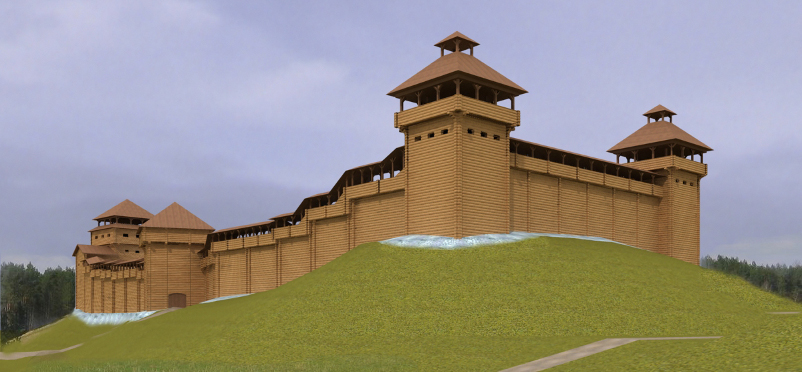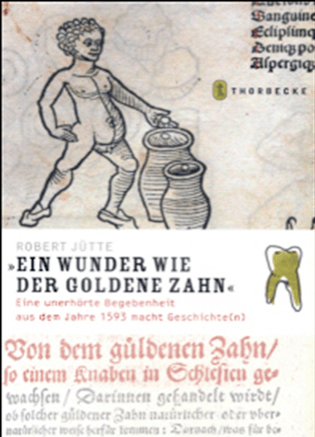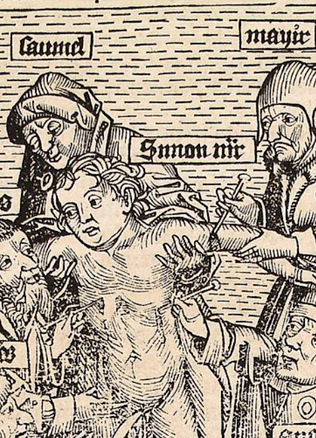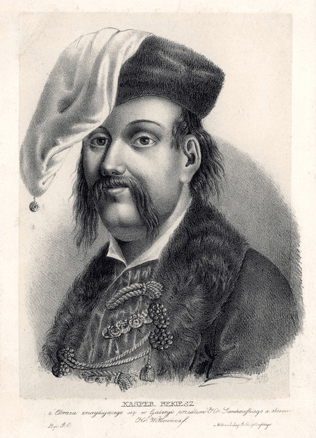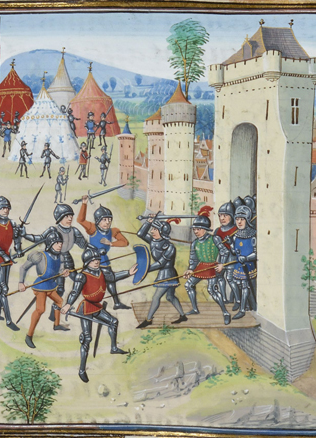Voruta
“And Tauvilas escaped to Samogitia to his uncle Vykintas, took the Yotvingians and Samogitians, and the support of Danielius that he had given him earlier, [and] battled against Mindaugas. Mindaugas gathered together his own [warriors] and decided to not fight in an open battle, but enter the castle called Voruta.”
Do You Know?
Perhaps it is difficult to believe, but Voruta Castle (mid-13th century), which is mentioned only once very briefly in the Halych–Volhynian Chronicle, has been the subject of years of intense efforts to find its location: a ruler must have his own most important castle, and a state must have a capital. This was a popular line of thinking concerning the issue of the capital in the 19th century, which was dictated by the times. They have looked for Voruta, which has been called the first Lithuanian capital, in Samogitia and elsewhere in Lithuania, as well as in Belarus. Not one city, hill fort, or settlement with a similar name of at least some significance has been overlooked. Currently we can count at least fifteen places that could be called the location of Voruta based on stronger or weaker arguments. Some of them are rather far-fetched, such as Karelichy, Belarus or Medvėgalis and Varniai in Samogitia.
The search for the capital
In the best-argued hypotheses, Voruta could be either Vilnius, the Šeimyniškėliai Hillfort Mound near Anykščiai, or in Kernavė. All of these hypotheses have weaknesses. Vilnius only began growing in the second half of the 13th century and became a powerful castle at the beginning of the 14th century. Šeimyniškėliai is perhaps even a stronger competitor than Vilnius, as there was a large expanse near it, which in the Halych–Volhynian Chronicle was mentioned as a location of military clashes. However, there is not one hill fort among the fields there. In the case of Kernavė, it is not clear why it, which is mentioned approximately 28 years later in the 13th century than Voruta, would have suddenly changed its name. Perhaps some of these hypotheses are close to the right answer, however when considering the mobile nature of Mindaugas’ administration, we only know one of the names of his many castles that could have used to protect himself from his enemies.
A castle did not yet perform the function of a capital.
In history, it was natural that in the early period of the country’s founding, when the administration of the country was only asserting its position, while the bigger political upheavals of the second half of the 13th century ended in a radical change of ruling families, the administrative centre of the country (the capital) existed, due to various and the most surprising of reasons, as the castle, fortification, or settlement that was more often visited by the monarch.
Due to the imperfect structure of the early Lithuanian state, the place and name of King Mindaugas’ favourite castle city did not leave any traces either on the earth’s surface or in the pages of historical sources.
Mindaugas was a typical travelling ruler of an early monarchy, who ruled entirely by personal and family ties. For this kind of rule, he needed to move through the territories under his control, and his castles, villages and settlements in them who only in the future would join the country into a whole that was ruled from a capital.
Mindaugas’ first political and commercial support network (as was that of his father and his entire family) was enmeshed in southern Lithuania between the Neris and the Upper Nemunas. Being neighbours with ethnically mixed border territories that were dominated by agricultural and trade centres founded and inhabited by Russians (Navahrudak, Grodno, Slonim and Vawkavysk) was an influential factor in their early falling under Lithuanian control, while the historical literature from the 16th century created an unfounded myth about the first Lithuanian capital being in Navahrudak. Currently it is only Belarusian historiography that still does not want to admit that the non-Lithuanian centre of the country could be located in a borderland that was unsafe for Mindaugas, a borderland that was fought over for control for almost the entire 13th century with the strong dukes of Pinsk, Galicia and Volhynia. The Lithuanian centres of statehood appeared not in the Russian lands annexed earliest by Lithuanians, but in ethnic Lithuania.
The birth of Vilnius
Do You Know?
The search for the first Lithuanian capital has taken historians to various candidates that are more or less well-founded: Voruta, which was mentioned in the Halych–Volhynian Chronicle could have been founded in Vilnius, Kernavė or on the hill fort of Šeimyniškėliai near Anykščiai. Belarusian historians have looked for the first capital in the Ruthenian city of Navahrudak. However, historical research has shown that the 13th century capital as it is understood today did not exist: the early monarchy, controlled by the personal family ties of the ruler, demanded that he travel continuously through the lands under his control.
The first trustworthy verification of the residency of a Lithuanian monarch was Traidenis’ Kernavė. However, it was only Vilnius that became the true capital of the country, which according to Gediminas’ letters, was his royal city. In the middle of the 13th century there was a small fortified settlement that stood on Gediminas Hill. Traidenis established a new settlement at the foot of it: in 1271 on the northern slope of Gediminas Hill, covered with a deciduous forest, they began work on the building of small wooden houses. A few years later the houses were rebuilt, and a hearth for industrial needs was established at the southwestern foot of the hill (for metallurgy, and the production of charcoal, tar and turpentine) which was moved elsewhere in the 1420s. During the times of Butigeidis and Butvydas (around 1285-1295), enormous construction and expansion work was carried out. The construction of the Upper Castle, which was the residency of the grand duke, was finished on Pilies Hill (Castle Hill) in 1297. The settlement at the foot of the hill continued to expand. The growing density of construction, stability of the inhabited houses, and periodically replaced streets with a wooden surface allow one to talk about the appearance of a true pagan city. At the same time, Kreivasis Hill (Crooked Hill, also known as Plikasis or Trijų Kryžių Hill) also became inhabited. An Orthodox community, which became the Civitas Ruthaenica, or Russian City, was settled in an area near the intersection of the River Vilnia and the Polotsk and Medininkų–Rūdninkų routes. The southwestern foot of Pilies Hill, the place formerly used for the purposes of manufacturing, was settled by a colony of Catholic artisans and merchants from Riga, who invited the Franciscans to be their shepherds. A small brick church was built for them around 1321, which is incorrectly called the Cathedral of King Mindaugas in literature. A brick defensive wall, complete with towers that surrounded the town was built at the foot of Pilies Hill in the middle of the 14th century. A new river-bed was dug for the River Vilnia, which drained the wet valley where the river’s mouths were. Later on brick fortifications were installed in the Upper Castle. The grand dukes (or perhaps Christian missionaries) must have already built one or another residential brick building of 80 m2. Two have been found, but there may have been more.
At the beginning the small curia of the ruler and the ruler’s residence established on the hill fort, pagan Lithuanian settlements scattered about, and Catholic German and Orthodox Ruthenian colonies became the centre of the grand duke’s government in just 30-50 years, the influential Eastern and Central European capital of Vilnius, the fame of which was quickly growing.
Literature: Lietuvos istorija, t. 3, XIII a. – 1385 m.: Valstybės iškilimas tarp Rytų ir Vakarų. D. Baronas, A. Dubonis, R. Petrauskas. Vilnius, 2011; Zabiela, G., Kur stovėjo Vorutos pilis, Lietuvos istorijos metraštis, 1991 metai, Vilnius, 1993.
Artūras Dubonis
